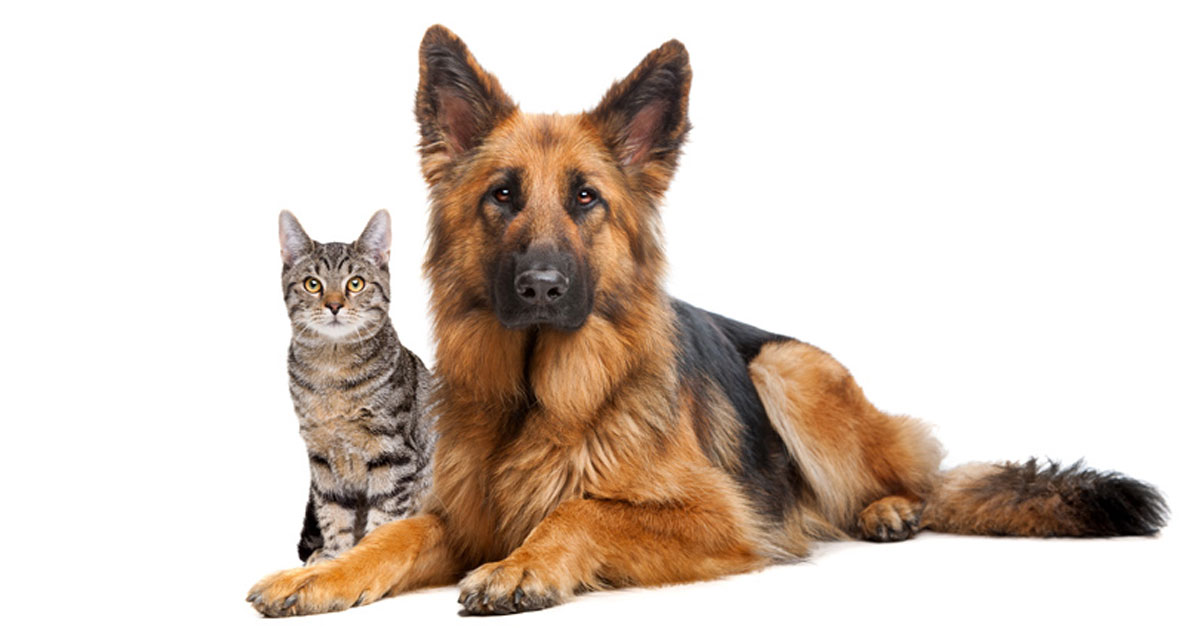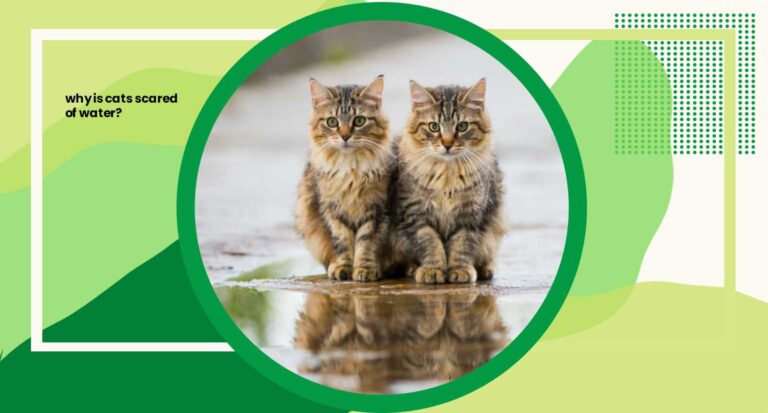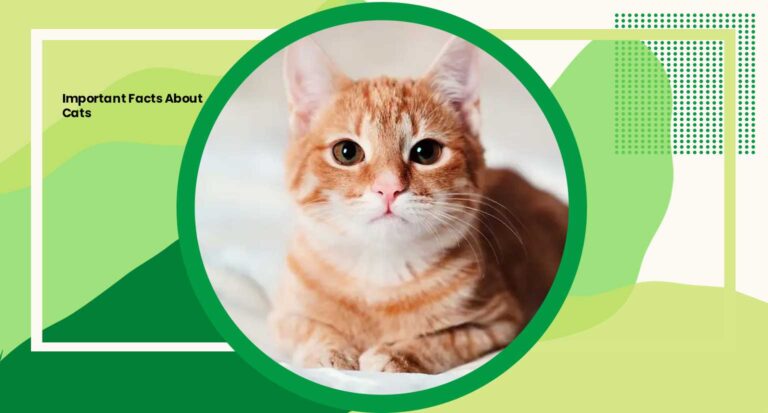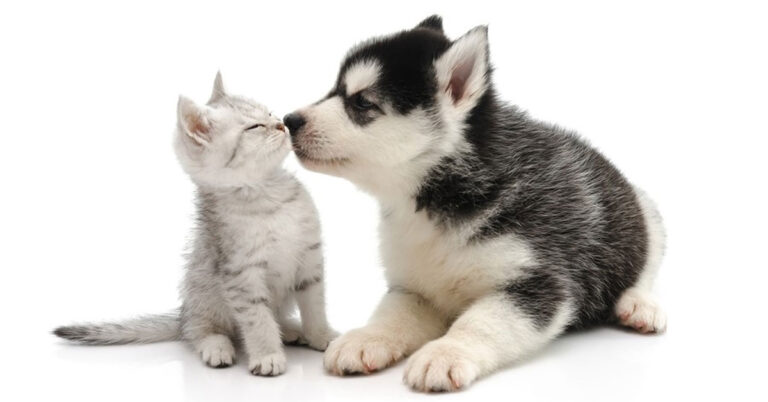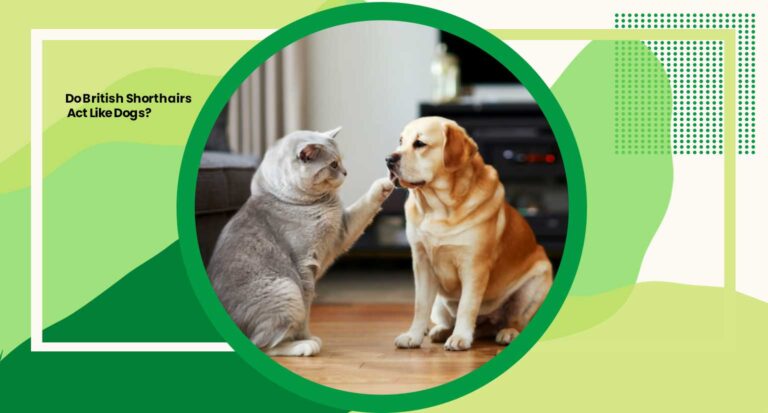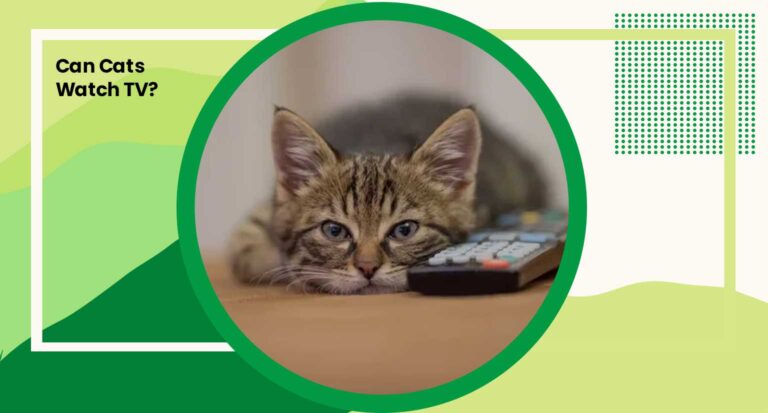Are German Shepherds Good With Cats?
While the short answer may be a guarded “yes,” it’s crucial to remember that individual dogs, much like people, can respond differently to new animals and environments. German Shepherd dogs, a breed recognized by the American Kennel Club for their intelligence and versatility, can certainly learn to live in harmony with cats. But, is it always a good idea? That depends on numerous factors, such as the German Shepherd’s personality, prior experience, and training.
German Shepherds, like other herding dog breeds, have a high prey drive. This natural instinct can trigger them to chase smaller animals, including cats. However, this doesn’t necessarily mean that a German Shepherd and a cat cannot coexist peacefully. Proper training, early socialization, and patience can help curb the dog’s natural tendencies, allowing a positive relationship to form between the two animals.
The first step towards a successful introduction involves preparing the German Shepherd for the new environment and presence of another animal. The new pet cat will also need its own space and time to adjust. It’s always a good thing to provide both animals time to acclimate before their first face meeting. This might mean keeping them in separate rooms or on opposite sides of a closed door for the first few days.
In conclusion, while German Shepherds can be good with cats, it largely depends on the individual dog and the circumstances. With enough space, good behavior, and patience, it’s entirely possible for these two different animals to become the best of friends.
Individual Factors to Consider
As with any new situation involving pets, there are several individual factors to consider when determining if a German Shepherd will be good with a cat. Let’s explore some of these crucial considerations.
Prior Experience
If your German Shepherd dog has had positive interactions with cats or other small animals in the past, it can significantly increase the chances of a peaceful coexistence. The opposite is also true; a German Shepherd with negative prior experiences may have a hard time adjusting.
Age and Temperament
Age can play a substantial role in this relationship. German Shepherd puppies introduced to cats at a young age generally have a better chance of getting along. The same goes for young kittens introduced to adult dogs. However, adult German Shepherds and older pets may need more time to adjust.
The dog’s temperament also matters. A laid back, well-trained German Shepherd might have an easier time adapting to the presence of a cat than a more dominant or high-energy dog.
Training
Proper training is perhaps the most critical factor. A German Shepherd that knows basic commands and obeys them will be easier to manage around cats. Early socialization with different people and animals also helps reduce any aggressive or dominant behaviors.
Remember, the success of a German Shepherd and a cat living together does not rely solely on the dog. The cat’s personality and previous experiences with dogs are also crucial factors to consider. A cat that has had positive experiences with dogs, or at least big dogs like German Shepherds, might be more receptive to a new canine companion.
Natural Herding Instinct
German Shepherds, originally bred as herding dogs, have a strong prey drive. This natural instinct is hardwired into their DNA and can sometimes complicate their relationship with cats or other small animals.
A German Shepherd’s high prey drive can sometimes be misinterpreted as aggressive behavior, but it’s often just a natural tendency to chase and round up moving things, an instinct that served them well as working dogs. This means they might naturally want to chase a cat that runs, which can lead to a stressful situation for both animals.
However, this doesn’t mean that all hope is lost. Through hard work, consistent training, and a lot of patience, this instinct can be managed. By reinforcing good behavior and gently correcting undesirable actions, you can guide your German Shepherd to understand that the cat is a member of the family, not a target to be chased.
In some cases, professional assistance from a dog trainer might be a good idea, especially if the German Shepherd shows signs of aggression or has a particularly strong prey drive. It’s all about understanding and working with your dog’s natural instincts rather than against them.
Intelligent Dogs
German Shepherds are among the most intelligent dogs breeds, as ranked by the American Kennel Club. This intelligence, coupled with their desire to please their owners, makes them highly trainable. In fact, German Shepherds excel in various fields, from search and rescue work to police and military service, because of their exceptional intelligence and trainability.
When it comes to cohabitation with cats, a German Shepherd’s intelligence can be a significant asset. These dogs are capable of understanding the difference between toys, small animals, and family pets with the right training. They can learn commands and behavior that facilitate peaceful coexistence with cats, like “leave it,” “sit,” or “stay.”
Furthermore, intelligent dogs like German Shepherds are usually more adaptable. They can adjust to new environments, new people, and new situations more easily than some other breeds. Therefore, if introduced correctly, they’re likely to accept a new cat into their home without much fuss.
Remember, it’s always a great way to start training your German Shepherd puppy from a young age. Puppy school or basic training classes can lay the foundation for well-behaved adult dogs who are respectful of other pets in the house.
Early Socialization and Training
When it comes to ensuring a harmonious relationship between your German Shepherd and a cat, early socialization and training are the keys to success. The more exposure your German Shepherd has to different animals, people, and environments at a young age, the better chance they have of being a well-rounded, adaptable adult dog.
Importance of Early Socialization
Early socialization involves introducing your German Shepherd puppy to a variety of experiences, including encounters with different types of people, animals, environments, and sounds. Socialization helps to ensure that your dog grows up to be a well-adjusted adult. It also significantly reduces the likelihood of fear, aggression, or anxiety around new situations, people, or animals, like a new pet cat.
Training for Harmony
Training is an essential part of raising a German Shepherd that will be good with cats. The first step in training is teaching your German Shepherd puppy basic commands like “sit,” “stay,” and “leave it.” These commands can help manage their behavior around the cat.
Positive reinforcement is the best way to train your German Shepherd. This involves rewarding good behavior, which encourages your dog to repeat it. When your German Shepherd acts calmly around the cat, reward him with treats or praise. If they get too excited or begin to chase, a firm “no” can help them understand that this behavior is not acceptable.
Keep in mind that training a German Shepherd to be good with cats takes time, patience, and consistency. Every dog is different, and some may take longer than others to adjust. It’s important to stay patient and consistent with your training methods.
Introducing a German Shepherd Puppy to a Cat
If you’re introducing a German Shepherd puppy to a cat, it’s a slightly easier process. Young dogs are typically more adaptable and open to new experiences, including meeting new animals. Here is a step-by-step guide to help you manage the introduction smoothly.
Step 1: Scent Swapping
The first step is to introduce the puppy and the cat to each other’s scent. This can be done by swapping bedding or a clean cloth that each pet has slept on. By allowing each animal to sniff the other’s scent without a face interaction, they can begin to get used to the presence of the other.
Step 2: Controlled First Meeting
When they seem comfortable with the scent, it’s time for a face meeting. For this first interaction, keep your German Shepherd puppy on a leash and let the cat approach at its own pace. Never force the interaction. Have a baby gate or pet gate handy to ensure the cat can escape to a safe space if it feels threatened.
Step 3: Monitor All Interactions
Until you’re confident that they are comfortable with each other, all interactions between your German Shepherd puppy and the cat should be supervised. During these sessions, encourage calm and gentle behavior from the puppy. Reward good behavior with treats or praise, reinforcing the idea that being calm around the cat is a good thing.
Introducing a German Shepherd puppy to a cat can be a lot of hard work. Still, with enough patience and positive reinforcement, the two can become great pets and potentially the best friends.
First Steps in Socialization
Socializing your German Shepherd puppy is one of the best ways to ensure they grow up to be a well-rounded adult dog. This process involves introducing your puppy to new environments, people, animals, and situations. Here are the first steps in socializing your German Shepherd puppy.
Step 1: Start Young
The best time to begin socializing your German Shepherd puppy is when they’re between 3 to 12 weeks old. During this period, puppies are most receptive to new experiences, making it a great time to expose them to different people, pets, and environments.
Step 2: Variety is Key
Expose your puppy to a wide variety of people, including men, women, children, and adults of all ages. This helps them learn that people are not a threat and reduces the likelihood of fear or aggression later in life. It’s also a good idea to introduce them to different animals, including cats, under controlled conditions.
Step 3: Encourage Positive Interactions
Whenever your puppy has a positive interaction, whether it’s with a new person, a new animal, or in a new environment, make sure to reward them. This could be with praise, treats, or playtime. This positive reinforcement helps your puppy understand that new experiences are good and fun.
Step 4: Gradual Introduction to Environments
Start by introducing your puppy to calm environments and gradually work your way up to busier ones. This slow introduction helps prevent your puppy from becoming overwhelmed and fearful.
Remember, socialization should be a positive experience for your puppy. Never force your puppy into a situation that they find scary. It’s better to take things slow and make sure your puppy is comfortable every step of the way.
Positive Reinforcement
Positive reinforcement is a highly effective training method for German Shepherds. This approach is based on the principle of rewarding good behavior, which encourages the dog to repeat it. Positive reinforcement can play a crucial role in training your German Shepherd to get along with cats.
How Does Positive Reinforcement Work?
The concept is simple: dogs will repeat behaviors that have positive outcomes. If your German Shepherd behaves appropriately around the cat and is rewarded for it, they will be more likely to repeat this good behavior.
The reward could be anything that your German Shepherd finds enjoyable. It could be a favorite treat, a fun game, praise, or petting. The key is that the reward must immediately follow the behavior. This helps your German Shepherd make a clear connection between the behavior and the positive result.
Applying Positive Reinforcement with Cats
When introducing your German Shepherd to a cat, look for opportunities to reward good behavior. For instance, if your German Shepherd is calm when the cat is in the room, give them a treat or a pat on the head. If they respond well to a command like “leave it” or “stay” when they’re excited about the cat, reward them.
On the other hand, if your German Shepherd behaves inappropriately, like chasing the cat or getting overly excited, redirect their attention to a more appropriate activity rather than punishing them. Then, when they engage in the desired behavior, reward them. This teaches your German Shepherd that good things happen when they behave well around the cat.
Using positive reinforcement is a great way to teach your German Shepherd to be good with cats, promoting a peaceful, happy household for all your furry friends.
The Introduction Phase
The introduction phase is a crucial period when your German Shepherd and cat are getting to know each other. This stage requires patience and careful planning to ensure that both animals feel safe and comfortable. Here’s how to navigate this important phase.
Creating Safe Spaces
Before the animals meet face to face, make sure they each have a safe space to retreat to. Cats often prefer high places where they can observe without being bothered, while dogs need a comfortable, quiet place like a crate or a separate room. These safe spaces provide a refuge where each animal can relax and feel secure.
Scent Introduction
Before the first meeting, introduce the animals to each other’s scent. This can be done by swapping bedding or using a soft cloth to rub each pet, then placing the cloth with the other pet. Scent swapping allows the animals to become familiar with each other in a non-threatening way.
Controlled First Meeting
When it’s time for the animals to meet face to face, control the situation to minimize stress. For the first several meetings, keep your German Shepherd on a leash and allow the cat to roam freely. This gives the cat a sense of control and allows the dog to get used to the cat’s presence without chasing it. Reward calm behavior and discourage any signs of aggression or overly-excited behavior.
Maintaining Supervision
Supervise all interactions until you are confident that both pets can behave appropriately around each other. Never leave them alone together until you are certain they can get along. This supervision helps prevent accidents and allows you to intervene if either pet becomes distressed or behaves inappropriately.
By taking the introduction phase slowly and respecting each pet’s needs, you can facilitate a successful relationship between your German Shepherd and your cat. It may take some time, but with patience, your pets can learn to live together harmoniously.
Scent Swapping
Scent swapping is a critical part of the introduction process between a German Shepherd and a cat. It’s a non-threatening way for both pets to get familiar with each other’s scent, thereby helping reduce any potential fear or aggression when they eventually meet face to face.
How to Perform Scent Swapping?
To conduct scent swapping, you can use a soft, clean cloth or a piece of bedding from each pet. Rub the cloth on your German Shepherd, then place it near the cat, and do the same with the cat’s cloth for the German Shepherd. This allows each pet to explore the other’s scent without the stress of a face-to-face meeting.
Keep these scented items in places where your pets spend a significant amount of time, like their bed or favorite lounging spot. This aids in associating the scent with a positive and comfortable environment. You can also reward your pets with treats when they show a positive or neutral response to the other’s scent, further reinforcing a positive association.
Why Scent Swapping Works?
Animals, including dogs and cats, rely heavily on their sense of smell to understand their environment and recognize other animals. By familiarizing your pets with each other’s scent, you’re helping them recognize each other as part of their environment, which can reduce anxiety and territorial behavior.
Scent swapping is a critical first step in introducing your German Shepherd to a cat. It sets the stage for future interactions and can play a significant role in creating a peaceful, multi-pet home.
Meeting on Opposite Sides of a Closed Door
Another effective method for the initial introduction of your German Shepherd and cat is to allow them to meet on opposite sides of a closed door. This method, often referred to as “doorway introductions,” allows the animals to sense each other’s presence without the potential stress of a direct encounter.
How to Conduct a Doorway Introduction?
To begin a doorway introduction, place your German Shepherd on one side of a closed door and the cat on the other side. This allows them to smell and hear each other without visual contact. Ensure that the door is secure and cannot be pushed open accidentally by either pet.
Observe their reactions. If they react calmly, reward them with treats or praises for their good behavior. If there are signs of aggression or fear, like growling or hissing, try to redirect their attention to a positive activity or toy. The goal is to create a calm, positive association with the presence of the other animal.
Gradual Progression
Once your pets consistently react calmly with the door between them, you can gradually move to introductions with visual contact. A pet gate or a glass door can be an excellent tool for this, as they allow visual contact while maintaining a physical barrier.
Meeting on opposite sides of a closed door can be a highly effective method to introduce your German Shepherd to a cat. It’s a gradual, low-stress way to allow your pets to get used to the idea of another animal in their environment, paving the way for more direct interactions in the future.
Face-to-Face Meeting
After your German Shepherd and cat have become familiar with each other’s scent and presence, it’s time for the first face-to-face meeting. This is a pivotal step, and how it is managed can significantly impact their relationship. Here’s how to conduct this important introduction.
Keep Your German Shepherd Leashed
During the initial face-to-face meetings, keep your German Shepherd on a leash. This allows you to maintain control over the situation and prevent any chasing behavior. The cat should be allowed to roam freely, allowing them to approach or retreat from the dog as they feel comfortable.
Choose a Neutral Location
Select a neutral location for the first meeting, somewhere that isn’t the favored spot of either pet. This reduces the chances of territorial behavior and helps both pets feel more relaxed.
Monitor Their Body Language
Observe both pets’ body language closely during the meeting. Signs of relaxation, like a wagging tail or purring, are good indications that the meeting is going well. However, signs of stress or aggression, such as growling, hissing, or raised fur, indicate that the pets need more time to get accustomed to each other. If you notice these signs, end the session and try again later.
Gradual Increase in Interaction Time
Start with short meetings, then gradually increase the interaction time as the pets become more comfortable with each other. Always end the meeting on a positive note to create a positive association with the interaction.
Remember, every pet is an individual, and it may take several face-to-face meetings before your German Shepherd and cat are comfortable with each other. Patience, positive reinforcement, and a slow, gradual introduction can help to ensure that your pets form a peaceful coexistence.
How to Ensure a Peaceful Coexistence
After your German Shepherd and cat have been introduced, the work doesn’t stop there. Ensuring a peaceful coexistence requires continuous efforts, understanding, and sometimes a little creativity. Here are some strategies to ensure a harmonious relationship between your German Shepherd and cat.
Continued Supervision
Even after successful introductions, continue to supervise interactions between your German Shepherd and cat. Over time, as they become more comfortable with each other, you can gradually decrease the level of supervision. However, always step in if you notice signs of distress or aggressive behavior from either pet.
Respect Each Pet’s Individual Space
Respecting each pet’s individual space is critical to a peaceful coexistence. Make sure your German Shepherd and cat each have a place to retreat to where the other can’t bother them. For cats, this is often a high shelf or a room with a pet gate that only they can jump over. For dogs, this might be a crate or a specific room in the house.
Keep Feeding Areas Separate
Food can be a major source of conflict in a multi-pet household. Keep feeding areas separate to prevent any potential fights. Ideally, feed your pets at the same time so one doesn’t feel left out.
Provide Plenty of Exercise for Your German Shepherd
German Shepherds are active and intelligent dogs that require plenty of exercise. Regular exercise can help reduce your dog’s energy levels and decrease the chances of them seeing the cat as a plaything or prey.
Consistent Training
Consistent training is key to maintaining a peaceful household. Continue to reward good behavior and discourage inappropriate actions. Remember, it’s much easier to reward good behavior than to punish bad behavior after it occurs.
With patience, understanding, and consistency, your German Shepherd and cat can live together peacefully. It may take some time, but the results are well worth the effort.
Creating Safe Spaces and Separation
Providing safe spaces for both your German Shepherd and cat is crucial for their comfort and wellbeing. These spaces serve as a sanctuary where each pet can retreat to if they feel threatened or need time alone. It’s equally important to ensure proper separation between your pets, especially during the early stages of their relationship. Here’s how to create safe spaces and maintain appropriate separation.
Safe Spaces for Your German Shepherd
A safe space for your German Shepherd might be a dog bed in a quiet corner of the house or a crate where they feel secure. This space should be somewhere your dog can retreat to for rest and relaxation. It’s important not to allow the cat access to this space, ensuring it remains a peaceful sanctuary for your dog.
Safe Spaces for Your Cat
Cats often prefer high places where they can observe their surroundings without being disturbed. A cat tree or a high shelf can serve as a safe space for your cat. Also, cats should have a room or area of the house where they can retreat to, with access that is restricted from the dog. This could be a room with a baby gate that the cat can jump over but the dog can’t.
Maintaining Separation
In the early stages of their relationship, it’s important to keep your German Shepherd and cat separated when unsupervised. You can use baby gates or close doors to maintain separation. As your pets become more comfortable with each other, you can gradually decrease the separation. However, always ensure that each pet has the ability to retreat to their own safe space if they need to.
Creating safe spaces and maintaining proper separation are key elements of a successful multi-pet home. These strategies help to reduce stress, prevent conflicts, and provide each pet with a sanctuary where they can relax and feel secure.
Implementing a Pet Gate or Baby Gate
Using a pet gate or a baby gate is a great way to manage interactions between your German Shepherd and cat, especially during the early stages of their relationship. These gates serve as a physical barrier, allowing your pets to see and smell each other without making direct contact. Here’s how to effectively implement a pet gate or baby gate in your home.
Choosing the Right Gate
When choosing a gate, consider the size of your German Shepherd and the jumping ability of your cat. The gate should be high enough that your German Shepherd cannot jump over it, but it should also allow your cat to easily jump over if they need to escape from the dog. Alternatively, some gates have a small pass-through door that you can leave open for the cat but is too small for the German Shepherd to use.
Location of the Gate
Place the gate at strategic locations, such as the entrance to the room where the cat’s litter box or feeding area is located. This ensures that your cat can eat and use the litter box without being disturbed by the dog. Also, you might consider placing a gate at the bottom of a staircase if your cat likes to retreat upstairs.
Monitoring Interactions
While a gate is a great tool to prevent unsupervised interactions, it’s also important to monitor your pets’ behavior at the gate. Reward them for calm and positive behavior near the gate to reinforce that the presence of the other pet is a good thing. If you notice any signs of aggression or excessive stress, remove the pet from the situation and give them some time to relax.
Implementing a pet gate or a baby gate is a great way to foster a safe environment where your German Shepherd and cat can gradually get used to each other’s presence. Remember, the goal is a peaceful coexistence, and these tools can be highly effective in achieving this objective.
Observing Their Interactions and Adjusting Accordingly
Observation is key to understanding the dynamics between your German Shepherd and cat. Each pet is unique and may not react the same way as another pet might in a given situation. By closely observing their interactions, you can identify areas that may need additional training or adjustment. Here’s how to effectively monitor your pets and make necessary changes.
Monitor Body Language
Body language provides important cues about how your pets are feeling. If your German Shepherd is calm, relaxed, and friendly, these are positive signs. A wagging tail, relaxed ears, and a play bow (where the dog lowers its front half while keeping the rear half up) are all indications that your German Shepherd is comfortable. On the other hand, a raised tail, bared teeth, and stiff body indicate stress or aggression.
Similarly, for cats, purring, slow blinking, and a relaxed tail are positive signs. However, hissing, arching of the back, and dilated pupils can indicate fear or aggression.
Identify Triggers
Try to identify any triggers that may lead to conflict or stress. For example, meal times, the arrival of new people or pets, and certain play activities can sometimes trigger aggressive behavior. Once you identify these triggers, you can manage them appropriately, such as feeding your pets in separate areas or using a baby gate during high-stress situations.
Adjust and Reinforce Training
Based on your observations, make necessary adjustments to your training regimen. If you notice that your German Shepherd is too playful with your cat, reinforce the commands “leave it” or “stay.” If your cat seems overly anxious, give them additional safe spaces or more high places to escape to. Positive reinforcement for good behavior is a powerful tool to help ensure peaceful coexistence.
Remember, the goal is to create a safe, peaceful environment where both your German Shepherd and cat feel comfortable. By observing their interactions and adjusting your approach as needed, you can foster a positive relationship between your pets over time.
Managing Aggression and Dominance
While German Shepherds are generally not aggressive, their size and high energy levels can sometimes be intimidating to cats. Also, as a herding breed, they might show signs of dominance or chase the cat, which can cause stress. Managing these behaviors early on is crucial for maintaining a peaceful home. Here are some strategies to manage aggression and dominance in your German Shepherd.
Recognize the Signs
Understanding the signs of aggression and dominance in dogs is the first step to managing them. These can include baring teeth, growling, a stiff body posture, intense staring, and chasing. If you notice any of these behaviors, it’s important to address them immediately.
Consistent Training
Consistent training is key in managing aggressive or dominant behaviors. Teach your German Shepherd basic commands such as “leave it,” “stay,” or “lie down.” These commands can help control your dog’s behavior when they start to show signs of aggression or dominance.
Consult a Professional
If your German Shepherd’s aggressive behavior continues despite your efforts, it’s a good idea to consult with a professional dog trainer or a behaviorist. They can provide specialized training techniques and strategies to manage your dog’s behavior effectively.
Avoid Punishment
Avoid punishing your German Shepherd for aggressive behavior as it can often lead to more aggression or fear. Instead, use positive reinforcement techniques to reward your dog for displaying good behavior.
Provide Plenty of Exercise
Providing your German Shepherd with plenty of exercise can help manage aggression and dominance. Regular physical activity can help burn off excess energy that might otherwise be directed towards the cat.
While it might be challenging to manage aggression and dominance, remember that patience, consistency, and understanding are key. With time and the right approach, your German Shepherd will learn to respect the cat, leading to a peaceful and harmonious home environment.
Identifying Signs of Aggression
Identifying signs of aggression early is crucial in preventing conflicts and fostering a peaceful relationship between your German Shepherd and cat. Both animals have unique ways of expressing discomfort or aggression, and understanding these signs can help you intervene before a situation escalates. Here are some key signs to watch out for in both your German Shepherd and cat.
Signs of Aggression in German Shepherds
German Shepherds, like other dogs, use body language to communicate. Signs of potential aggression in German Shepherds include a stiff body posture, raised hackles (the line of hair along the spine), bared teeth, growling, snapping, and an intense stare. Another sign is predatory behavior, such as intense focus on the cat, stalking, or chasing. These behaviors are indicative of discomfort or aggression and need to be addressed immediately.
Signs of Aggression in Cats
Cats also have their own set of signals to indicate aggression or fear. Signs of potential aggression in cats include hissing, spitting, swatting, arching the back, fluffing up the fur, and sideways positioning. Another common sign is the cat’s tail. A lashing tail or a tail that is puffed up can indicate fear or aggression. Dilated pupils and hiding are other indicators of stress or fear in cats.
If you notice any of these signs of aggression, it’s important to intervene immediately to prevent escalation. Remove the pets from each other’s presence and give them time to calm down. It may be necessary to consult a professional animal behaviorist if aggression continues despite your best efforts.
Remember, each German Shepherd and cat is an individual, and their tolerance levels can vary. Regularly monitor their interactions and watch for these signs to ensure a peaceful coexistence.
Intervening in Dominant Behaviors
Dominance is a natural behavior for many dog breeds, including German Shepherds. However, it’s essential to manage and control these behaviors to ensure they don’t escalate into aggression, particularly with smaller animals like cats. Here are some tips on how to intervene effectively when your German Shepherd displays dominant behaviors.
Interrupt the Behavior
As soon as you notice dominant behavior, such as excessive chasing, barking, or intimidation, intervene immediately. A firm “no” or “stop” command can be enough to interrupt the behavior. However, ensure your tone of voice is calm and firm, not angry or scared, as dogs can pick up on emotional cues.
Use Diversion Tactics
Diverting your German Shepherd’s attention can help control dominant behaviors. If they begin to show signs of dominance around the cat, use their favorite toy or treat to distract them. This can help break the pattern of behavior and redirect their focus to something else.
Reinforce Basic Training Commands
Reinforce basic training commands such as “sit,” “stay,” “leave it,” and “lie down.” These commands can help control your German Shepherd’s behavior, especially in situations where they’re showing signs of dominance. Remember, consistency is key in training and ensuring these commands are followed.
Seek Professional Help
If your German Shepherd’s dominant behaviors continue or escalate, it might be a good idea to consult with a professional dog trainer. They can provide you with effective techniques and strategies tailored to your dog’s behavior and needs.
Intervening in dominant behaviors helps ensure the safety and well-being of all your pets. With patience, consistency, and the right training techniques, you can manage your German Shepherd’s dominant behaviors and foster a peaceful coexistence with your cat.
Encouraging Positive Interactions
Creating a positive environment for both your German Shepherd and cat to interact is a critical component of their relationship. By fostering positive interactions, you can reduce the likelihood of conflicts and help them form a bond. Here’s how you can encourage positive interactions between your German Shepherd and cat.
Use Positive Reinforcement
Positive reinforcement is an excellent tool for promoting good behavior. Reward your German Shepherd with treats, praise, or petting when they act calmly around the cat. Similarly, reward your cat when they behave well around the dog. This will associate their positive behavior with good experiences, encouraging them to repeat it.
Supervised Playtime
Supervised playtime can help your pets get accustomed to each other in a controlled environment. Start with short, frequent sessions, gradually increasing the length as they get more comfortable. Use toys during playtime to divert the attention from each other and onto the toys. Make sure to intervene if play gets too rough or if one pet seems uncomfortable.
Shared Activities
Engaging your pets in shared activities can help form positive associations. This can be simple activities like feeding them at the same time, but at a safe distance, or taking your German Shepherd for a walk while carrying your cat in a cat carrier. This can help them associate positive experiences with the presence of the other animal.
Respecting Each Other’s Space
While encouraging interactions, also make sure that each pet has their own space to retreat to. A safe, personal space that they can retreat to when they feel overwhelmed can reduce stress and prevent conflicts.
Remember, every animal is different, and what works for one might not work for another. Patience and consistency are key in promoting positive interactions. With time, your German Shepherd and cat can learn to enjoy each other’s company and form a positive bond.
Rewarding Gentle Behavior
Rewarding gentle behavior is an effective way to encourage peaceful interactions between your German Shepherd and cat. Dogs and cats are both highly responsive to positive reinforcement, and this method can be used to encourage and reward good behavior, discouraging negative actions in the process. Here’s how to implement this technique effectively.
Identify Gentle Behavior
The first step is to identify what constitutes gentle behavior in your pets. For your German Shepherd, this might be when they approach the cat slowly and calmly, or when they respond to the cat’s hisses or swats by backing off. For the cat, gentle behavior might be allowing the dog to sniff them without reacting aggressively, or calmly sharing a space with the dog.
Reward Immediately
Timing is crucial in positive reinforcement. As soon as your pet displays gentle behavior, reward them immediately. This could be with a small treat, a favorite toy, or verbal praise. The quicker the reward follows the behavior, the more likely they are to associate the two.
Be Consistent
Consistency is key in training pets. Make sure to reward your pets every time they display gentle behavior. This will strengthen the association between their behavior and the positive outcome, increasing the likelihood of them repeating it.
Gradually Reduce Rewards
Once your pets consistently display gentle behavior, start to gradually reduce the frequency of rewards. Over time, their good behavior should become habitual, and rewards can be given intermittently rather than every time.
By rewarding gentle behavior, you can foster a positive and peaceful relationship between your German Shepherd and cat. Remember to be patient, as change will take time. With consistent positive reinforcement, your German Shepherd and cat can learn to coexist harmoniously.
Increasing Interaction Time Gradually
Allowing your German Shepherd and cat to spend more time together can foster familiarity and trust. However, it’s important to ensure that these interactions occur gradually and under supervision. Here are some steps you can take to slowly increase interaction time between your German Shepherd and cat.
Starting with Short, Supervised Interactions
Begin by allowing short, controlled interactions under your supervision. This might be as brief as a few minutes a couple of times a day. During these sessions, look out for signs of stress or aggression and be ready to intervene if necessary. This early stage is crucial for setting the tone of their future relationship, so positive experiences are key.
Gradually Increasing Time
As your German Shepherd and cat become more comfortable with each other, gradually extend the duration of their interactions. If they are both relaxed and showing no signs of discomfort or aggression, you can begin to increase the interaction time. It might take days or even weeks to reach this stage, and that’s okay. Remember, the goal is a peaceful, long-term relationship, not a quick fix.
Encouraging Shared Activities
Encourage activities that can be done together, such as eating meals or playing with toys. Shared activities can help them associate the presence of the other animal with positive experiences.
Observing Their Behavior
While you’re increasing interaction time, it’s crucial to continue observing their behavior. If you notice signs of stress, aggression, or fear, you may need to reduce the interaction time again and consult a professional for further advice.
Remember, each pet is unique, and what works for one pair may not work for another. The key is patience, observation, and a slow, steady approach. With time, your German Shepherd and cat can learn to spend more time together and coexist peacefully.
The Role of Breed and Personality
While training and socialization play vital roles in ensuring a German Shepherd and a cat can coexist, it’s important to remember that breed characteristics and individual personalities also significantly influence their relationship. Let’s explore these aspects further.
The German Shepherd Breed
German Shepherds are known for their intelligence, trainability, and loyalty. However, as a herding dog breed, they also have a high prey drive and may instinctively chase smaller animals like cats. That said, with proper training and socialization from a young age, many German Shepherds can learn to live peacefully with cats.
The Cat’s Breed and Personality
Just like German Shepherds, different cat breeds have different characteristics. Some cats are more laid back and might tolerate a dog better, while others might be more territorial and less accepting of a new pet. The cat’s prior experience with dogs can also influence how they react to your German Shepherd.
Individual Dog Personality
Within breeds, each dog has its own personality. Some German Shepherds might be more laid-back and less likely to chase a cat, while others might have a stronger prey drive. Understanding your German Shepherd’s individual personality can help you anticipate their behavior and train them effectively.
In conclusion, breed and personality are significant factors in determining whether a German Shepherd and cat can coexist peacefully. Understanding these aspects can provide valuable insights into their behavior and aid in your training efforts. Nevertheless, with patience, time, and the right strategies, most German Shepherds and cats can learn to live together harmoniously.
German Shepherds vs. Other Breeds
It’s important to note that the compatibility of dogs and cats can vary widely depending on the breed of dog. German Shepherds, as compared to other breeds, have unique characteristics and tendencies that can influence their interactions with cats.
Prey Drive
German Shepherds have a higher prey drive than many other breeds, due to their herding heritage. This instinct can cause them to chase smaller animals, including cats. In contrast, breeds like Golden Retrievers are often more tolerant of smaller animals due to their lower prey drive.
Intelligence and Trainability
On the other hand, German Shepherds are among the most intelligent dogs, ranked third by the American Kennel Club. This intelligence, coupled with their eagerness to please, makes them highly trainable. Other breeds may not be as quick to learn or as eager to please, which can make training more challenging.
Size and Physicality
German Shepherds are a large and physical breed. Their size can be intimidating to cats, and they may inadvertently hurt a cat during play due to their strength. Smaller or less physical breeds might be less threatening to cats.
Energy Levels
German Shepherds are active and energetic dogs that require plenty of exercise. Their high energy levels might be overwhelming for some cats. In contrast, less active breeds might be less likely to provoke a cat’s defensive instincts.
In conclusion, while German Shepherds have some characteristics that might make them less naturally compatible with cats, their intelligence and trainability can often overcome these challenges. However, it’s essential to remember that each individual dog’s personality and experiences can significantly impact their compatibility with cats.
Conclusion
Are German Shepherds good with cats? The answer, as we have discovered, can be a resounding ‘yes’, given the right circumstances and with appropriate training. It’s important to remember, however, that each German Shepherd and cat are individuals with unique personalities and behaviors.
From understanding the breed’s natural instincts to implementing a successful introduction phase and effective socialization methods, owners can play a pivotal role in promoting a harmonious coexistence between their German Shepherds and cats. Ensuring safe spaces, managing signs of aggression, and rewarding good behavior are all essential steps to foster a positive relationship.
While the breed characteristics of German Shepherds may pose some challenges, their intelligence and trainability can help overcome these. Patience, consistency, and understanding are key. With these elements in place, German Shepherds and cats not only can share a home but might also become the best of friends.
Remember that getting professional advice from a dog trainer or a behaviorist can be beneficial, especially if you’re experiencing persistent issues. Above all, creating a loving, peaceful environment for both your pets is the ultimate goal.
Related Articles:

